A Bias in the Prediction of Tastes - Carnegie Mellon University
A Bias in the Prediction of Tastes - Carnegie Mellon University
A Bias in the Prediction of Tastes - Carnegie Mellon University
You also want an ePaper? Increase the reach of your titles
YUMPU automatically turns print PDFs into web optimized ePapers that Google loves.
I995] THE PREDICTION OF TASTES 933<br />
<strong>Mellon</strong> group, and$ I .59 (t(35) = 2t I, p < o0os) for <strong>the</strong> <strong>University</strong> <strong>of</strong> Pittsburgh<br />
group. Mug valuations <strong>of</strong> <strong>the</strong> group which did not make a prediction were<br />
higher, but not significantly so, than those <strong>of</strong> <strong>the</strong> group which did make a<br />
prediction, suggestive <strong>of</strong> a weak anchor<strong>in</strong>g effect.<br />
II. EXPERIMENT 2<br />
A limitation <strong>of</strong> <strong>the</strong> first study is that it was not '<strong>in</strong>centive compatible' because<br />
subjects had no <strong>in</strong>centive to provide accurate predictions <strong>of</strong> <strong>the</strong>ir own sell<strong>in</strong>g<br />
prices (although, by <strong>the</strong> same token, <strong>the</strong>re was no <strong>in</strong>centive for mis-<br />
representation). The second experiment avoided this problem by <strong>in</strong>form<strong>in</strong>g<br />
subjects that <strong>the</strong>y had a 50?% chance <strong>of</strong> gett<strong>in</strong>g a mug and elicit<strong>in</strong>g a sell<strong>in</strong>g<br />
price that would apply if <strong>the</strong>y got a mug. Our prediction was that subjects who<br />
only had a 50 % chance <strong>of</strong> gett<strong>in</strong>g a mug would not feel endowed and, like <strong>the</strong><br />
prediction subjects <strong>in</strong> <strong>the</strong> previous experiment, would underestimate <strong>the</strong> sell<strong>in</strong>g<br />
price that <strong>the</strong>y would want to prevail if <strong>the</strong>y did get a mug.<br />
A second limitation <strong>of</strong> <strong>the</strong> first study was that it did not elicit choice prices<br />
from subjects, so it was impossible to determ<strong>in</strong>e where <strong>the</strong> predicted sell<strong>in</strong>g<br />
price lay on <strong>the</strong> cont<strong>in</strong>uum between choice values and actual sell<strong>in</strong>g prices. If<br />
subjects predict <strong>the</strong>ir own sell<strong>in</strong>g prices perfectly, <strong>the</strong>n we would observe s' = s<br />
(as def<strong>in</strong>ed <strong>in</strong> equations (I )-(3)); if <strong>the</strong>y are completely unable to predict <strong>the</strong><br />
effect <strong>of</strong> possess<strong>in</strong>g <strong>the</strong> object on <strong>the</strong>ir preferences, <strong>the</strong>n we would anticipate<br />
s= c - i.e. that predicted sell<strong>in</strong>g prices will correspond to choice prices. To<br />
assess where <strong>the</strong>ir predictions lie on this cont<strong>in</strong>uum, we can construct an <strong>in</strong>dex<br />
<strong>of</strong> prediction bias, /1, def<strong>in</strong>ed by:<br />
(s-s') (4)<br />
, will equal o for <strong>in</strong>dividuals who predict <strong>the</strong>ir own sell<strong>in</strong>g prices perfectly, and<br />
I for those who are completely unable to predict <strong>the</strong> effect <strong>of</strong> be<strong>in</strong>g endowed<br />
on <strong>the</strong>ir valuation <strong>of</strong> <strong>the</strong> object. Note that this <strong>in</strong>dex reflects only <strong>the</strong> degree <strong>of</strong><br />
prediction bias, and not <strong>the</strong> magnitude <strong>of</strong> <strong>the</strong> endowment effect which some<br />
people view as a type <strong>of</strong> bias <strong>in</strong> its own right.<br />
II.I Method<br />
Two executive education classes at Northwestern <strong>University</strong> with a total <strong>of</strong> I o6<br />
students were each randomly assigned to two experimental groups which were<br />
isolated <strong>in</strong> separate rooms. In <strong>the</strong> control condition, a co<strong>in</strong> was flipped for each<br />
subject and subjects who called it correctly were given a mug emblazoned with<br />
<strong>the</strong> school logo. Sell<strong>in</strong>g prices were elicited from those who obta<strong>in</strong>ed a mug,<br />
and choice prices from those who did not, us<strong>in</strong>g forms that were analogous to<br />
those used to elicit sell<strong>in</strong>g prices <strong>in</strong> <strong>the</strong> first experiment.<br />
For <strong>the</strong> experimental group, <strong>the</strong> identical type <strong>of</strong> mug was displayed at <strong>the</strong><br />
front <strong>of</strong> <strong>the</strong> room, and subjects were told that <strong>the</strong>re was a 50?% chance <strong>of</strong><br />
receiv<strong>in</strong>g one, based on whe<strong>the</strong>r <strong>the</strong>y correctly called a co<strong>in</strong> flip. Prior to <strong>the</strong><br />
co<strong>in</strong> flip, sell<strong>in</strong>g prices were elicited, which subjects were told would apply if<br />
K Royal Economic Society I995



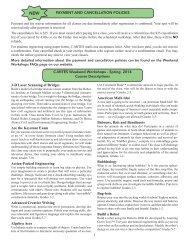
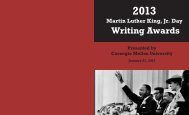
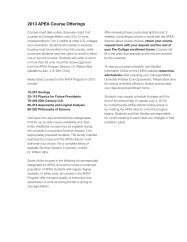

![Pittsburgh Neighborhoods [.pdf] - Carnegie Mellon University](https://img.yumpu.com/22011290/1/190x115/pittsburgh-neighborhoods-pdf-carnegie-mellon-university.jpg?quality=85)
![Curriculum Vitae [.pdf] - Carnegie Mellon University](https://img.yumpu.com/20737100/1/190x245/curriculum-vitae-pdf-carnegie-mellon-university.jpg?quality=85)
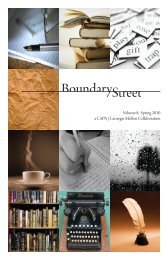
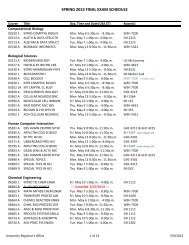
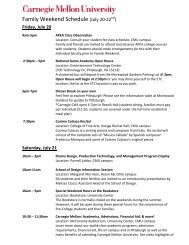
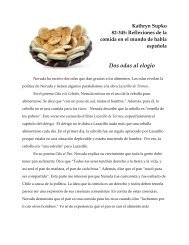


![May 2012 [.pdf] - Carnegie Mellon University](https://img.yumpu.com/12198417/1/190x253/may-2012-pdf-carnegie-mellon-university.jpg?quality=85)
